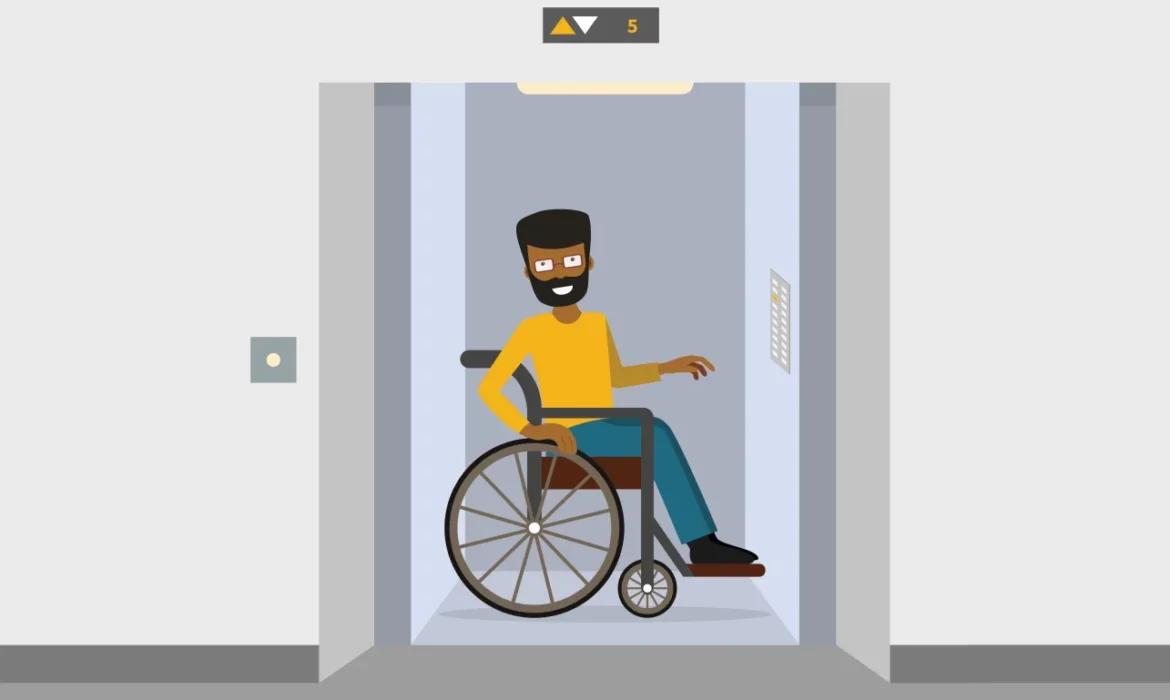ELEVATORS FOR DISABLED PEOPLE: MINIMUM DIMENSIONS AND CHARACTERISTICS
Lifts for the disabled are an excellent solution for making architectural barriers in buildings, condominiums and public places accessible and broken down to all people: disabled people in wheelchairs, but also people with mobility difficulties or parents with children in strollers. They are also useful for improving domestic mobility in multi-storey homes, making it easier to move and transport loads such as shopping bags or cases of water.
Elevators for disabled people minimum dimensions for new buildings
Lifts for disabled people must have particular characteristics and measurements to allow people in wheelchairs to use them in a safe, practical and independent manner.
The law establishes particular characteristics for internal or external lifts present in new buildings which differ according to their intended use. In all new buildings:
- lift for disabled people in a non-residential building : it must have cabins with a minimum depth of 140 cm by 110 cm wide and a door with a clearance of at least 80 cm; the space in front of the cabin must be at least 150×150 cm to allow wheelchairs to access and disembark without difficulty.
- elevator for the disabled in a building for residential use : the elevator cabin must have the following minimum dimensions: 130 cm deep by 95 cm wide and, as for those for non-residential use, it must guarantee a space in front of at least 150 x150 cm.
Lifts for disabled people in existing buildings
The design of a lift for the disabled to be installed in an existing building must take into account slightly smaller dimensions than lifts for the disabled in newly built buildings:
- the cabin must have a depth of at least 120 cm in depth and 80 cm in width , while the depth must be at least 75 cm and the minimum space in front of the cabin must be 140×140 cm.
Other mandatory and non-mandatory features for lifts for disabled people
In addition to specific measures, some mandatory features are foreseen in the design of a lift for disabled people to ensure easy and safe use for people in wheelchairs:
- automatic doors both in the cabin and on the floor;
- spacious cabin to allow wheelchair access and movement inside;
- photocell sensors that block the doors in case of impediment;
- alarm bell and emergency telephone at a height between 110cm and 130cm;
- internal and external control buttons at an adequate height also equipped with braile relief for the blind;
- indicator light to signal the arrival of a call and for signaling;
- emergency light;
- cabin floor in line with that of the landing, with a maximum tolerance of 2 cm;
- parking on the floor with doors closed;
- audible signal of arrival at the floor.
To facilitate the use of the lift by disabled people, it is possible to install a handrail inside the cabin which will improve comfort and safety during transport. Furthermore, it is advisable to provide a cabin of adequate dimensions even for the transport of a companion , to allow non-self-sufficient disabled people to use the lift.


